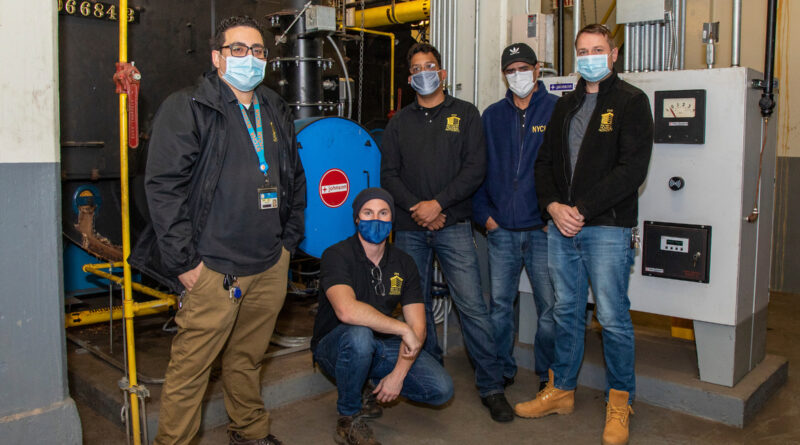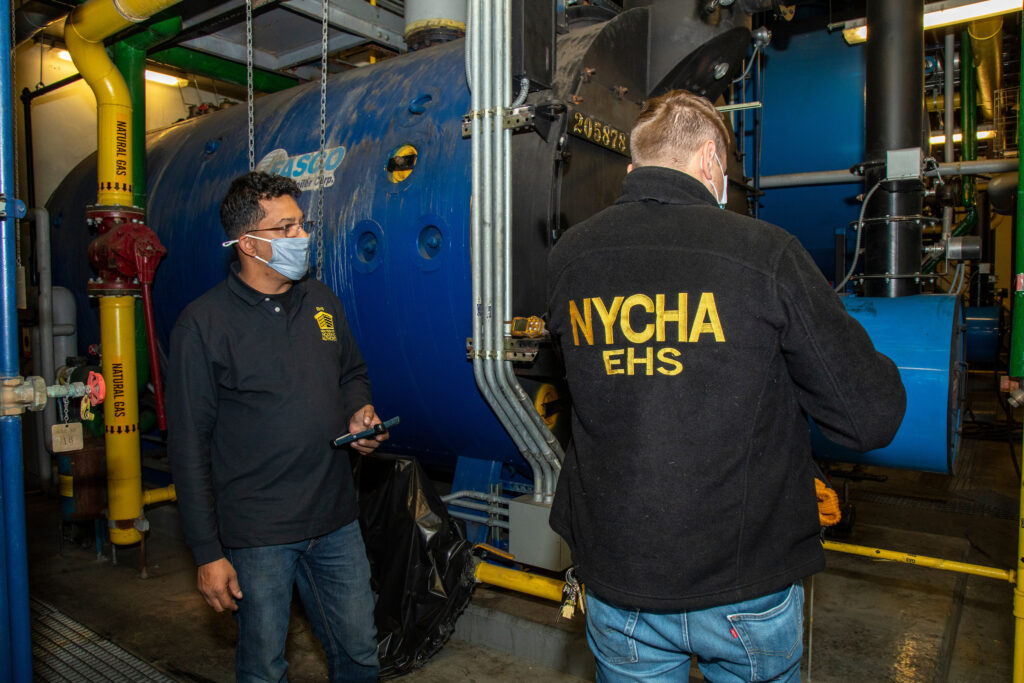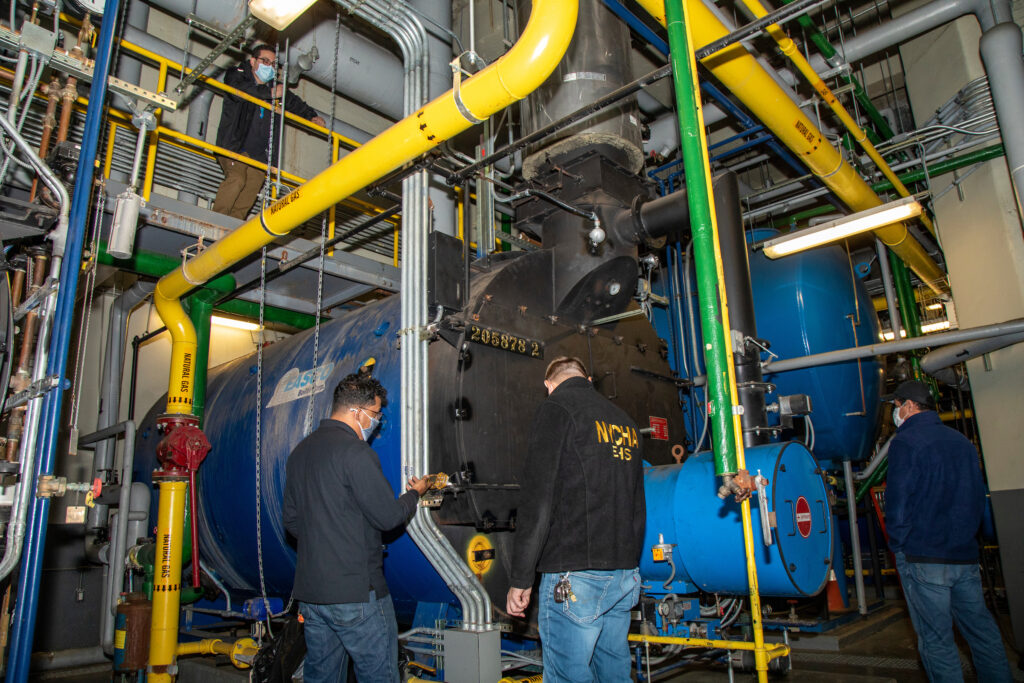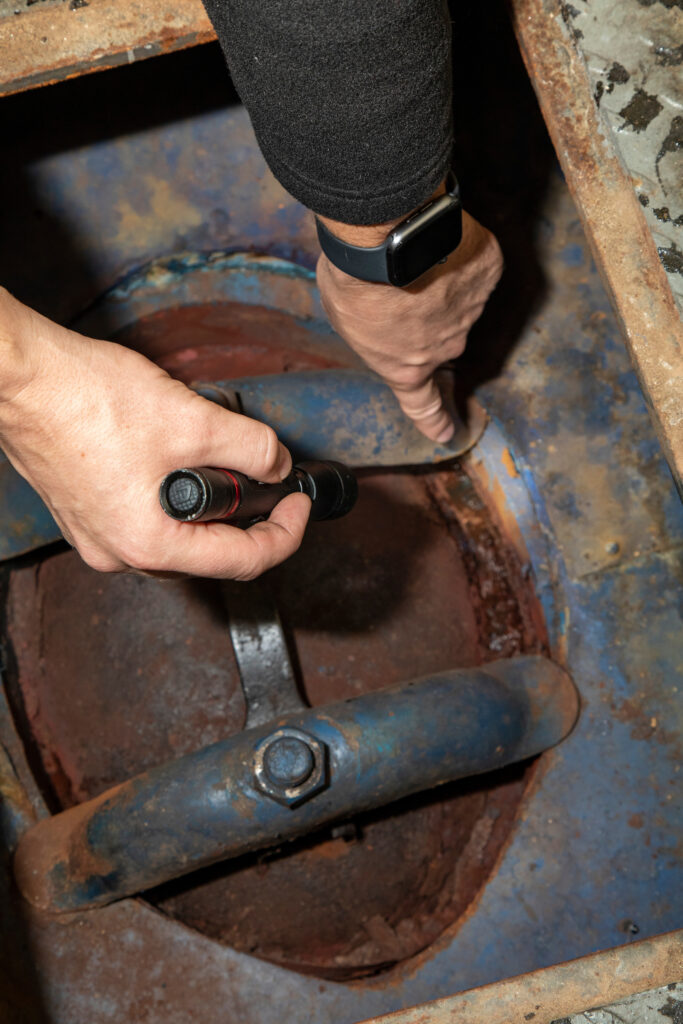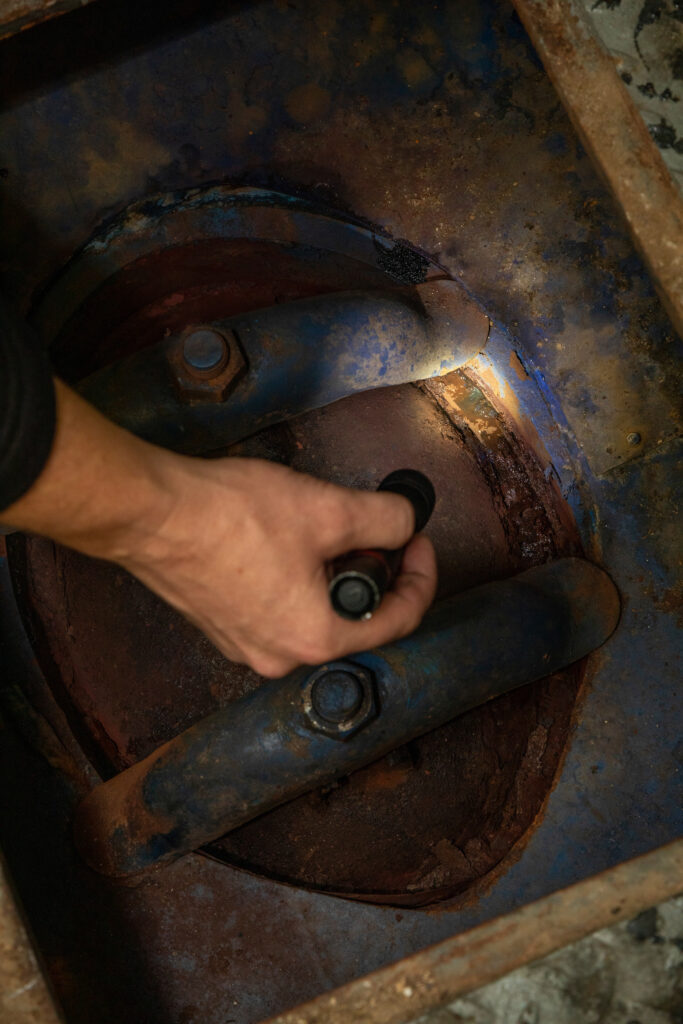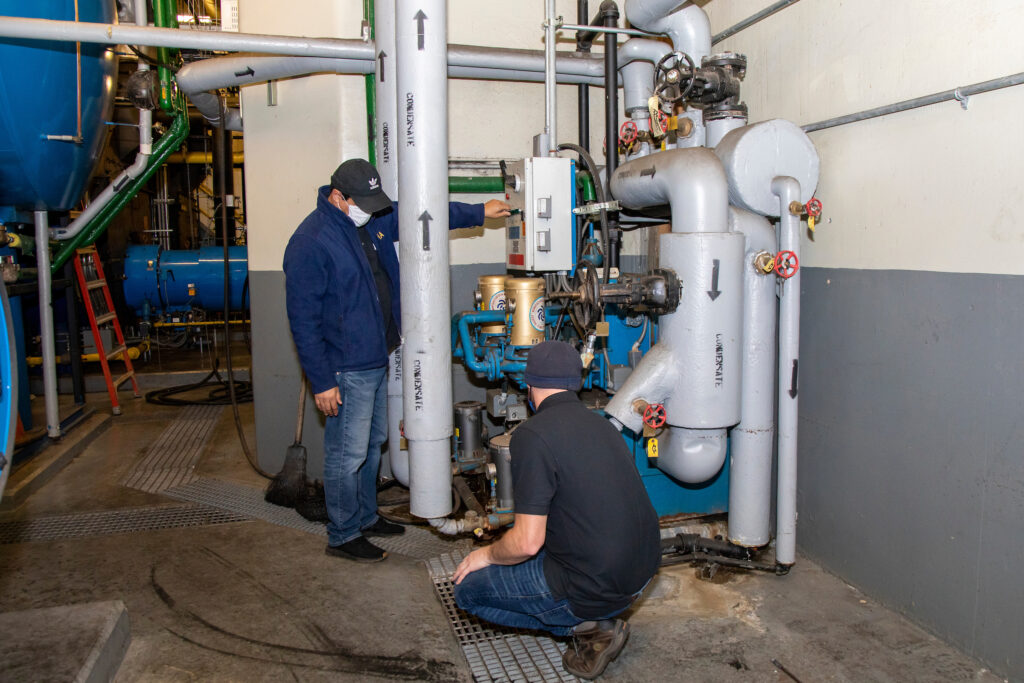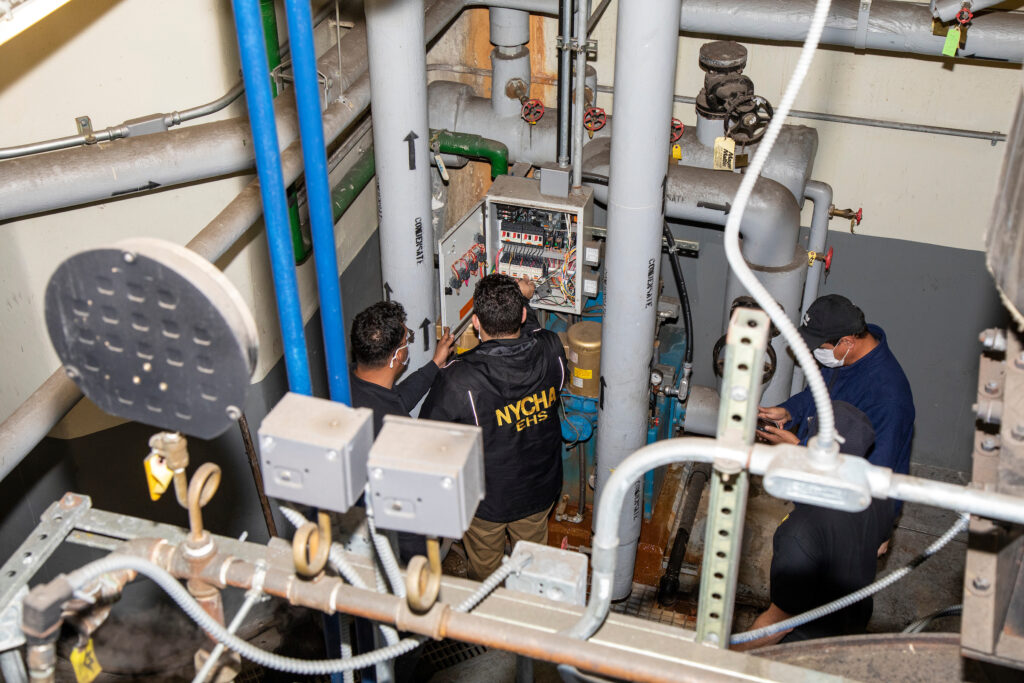Meet the EHS Heating Oversight Team (HOT)
NYCHA’s Environmental Health and Safety Department’s (EHS) Heating Oversight Team (HOT) monitors NYCHA’s compliance with regulations and standards governing heating systems to ensure residents are provided with reliable heat and hot water service. HOT is one of three teams within EHS’ Building Systems Safety Unit tasked with overseeing critical building functions (the other teams oversee elevator and fire safety).
The HOT investigates and analyzes the root cause of unplanned heating outages lasting more than 12 hours. The team ensures that the appropriate NYCHA departments address key issues or potential hazards that may affect the quality of heat and hot water service provided to residents.
The HOT’s five Heating Oversight Specialists are led by a Heating Oversight Administrator. They are all heating industry professionals with extensive knowledge of heating systems and heating safety practices. As a team, they perform oversight activities such as:
- Inspecting tank and boiler rooms (including various boiler components and tank room equipment) to ensure they meet NYCHA standards;
- Inspecting completed repair work and annual overhauls conducted by NYCHA’s Heating Management Services Department (HMSD); and
- Providing HMSD with recommendations to correct any environmental health and safety issues at NYCHA developments.
HOT Administrator Krzysztof Wasik said staff and residents appreciate when the team is on the grounds of a development. Heating Oversight Specialist Edwin Acety agreed: “Residents are glad to see us sharing our knowledge in making the place they call home a safe one.”
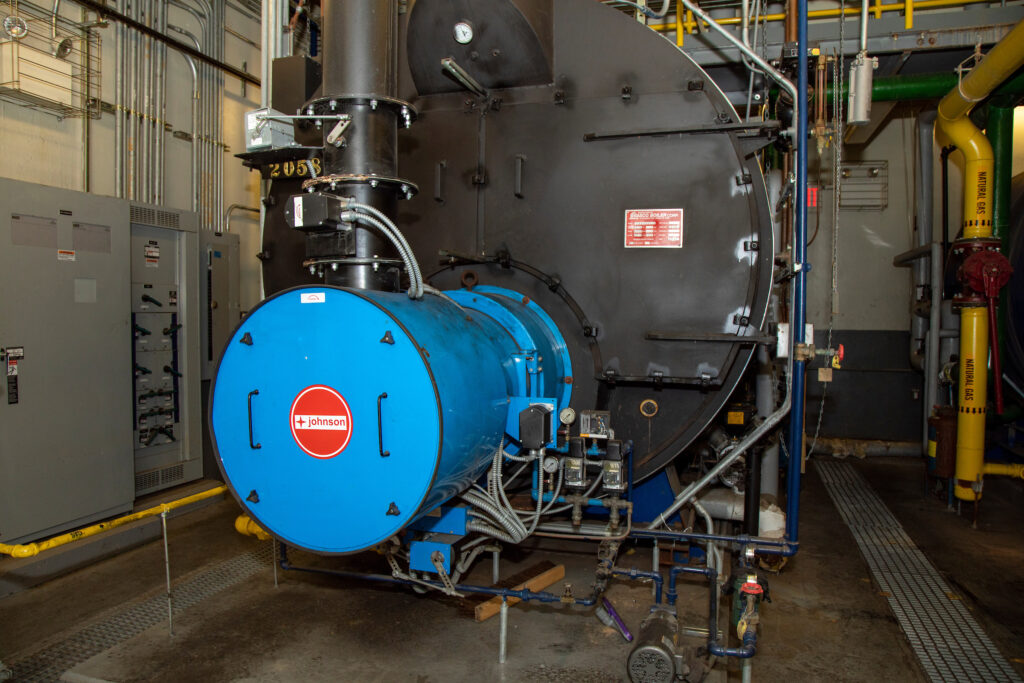
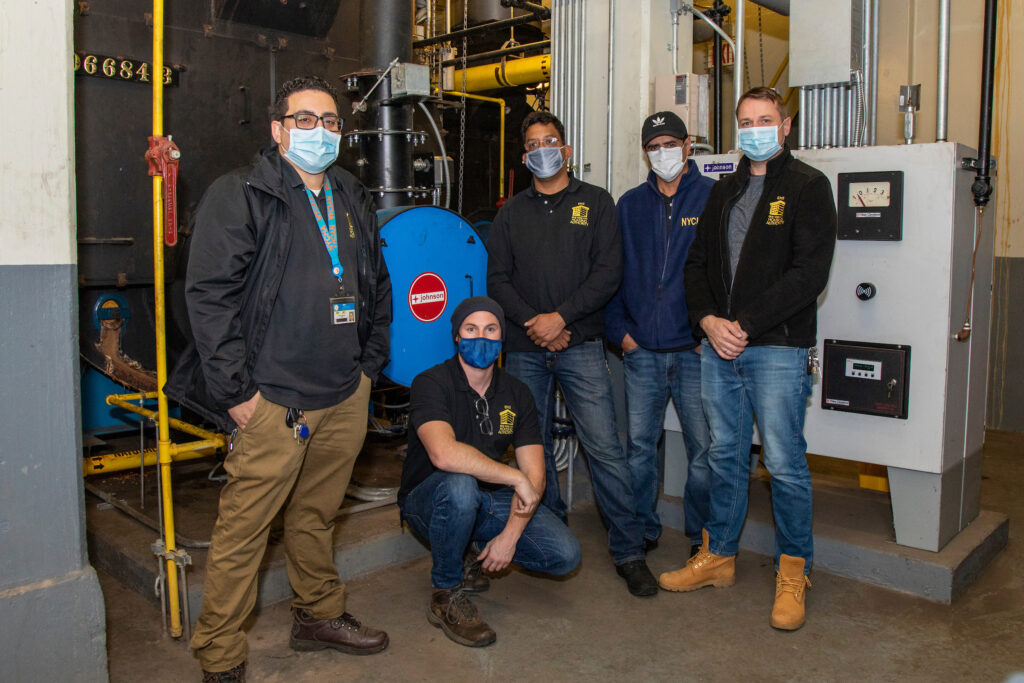
Several members of the HOT conduct an annual inspection of a heating plant at a NYCHA development: HOT Administrator Krzysztof Wasik and HOT Specialists Carlos Ducos, Joseph Schmidt, Hector Perez, and Edwin Acety (from left to right).
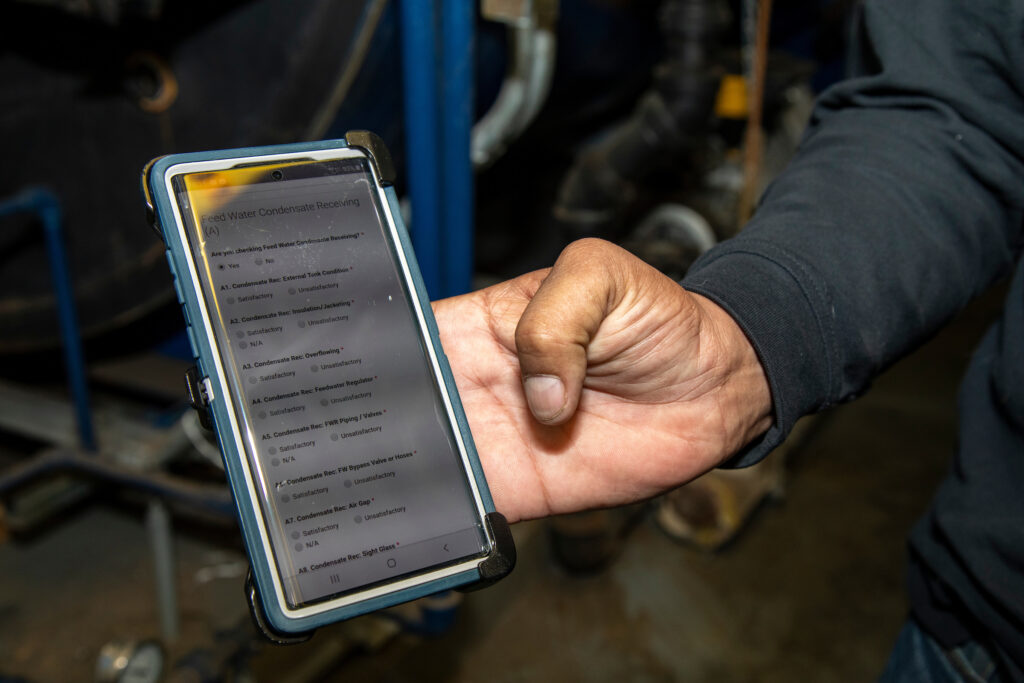
A HOT Specialist displaying the team’s inspection checklist, which is based on regulations and standards governing heating systems as well as NYCHA’s Heating Standard Procedure. As the team inspects the equipment, they use the digital checklist to record whether specific items are satisfactory or unsatisfactory. At the end of the inspection, an overall grade is assigned that indicates whether the boiler is in satisfactory or unsatisfactory condition.
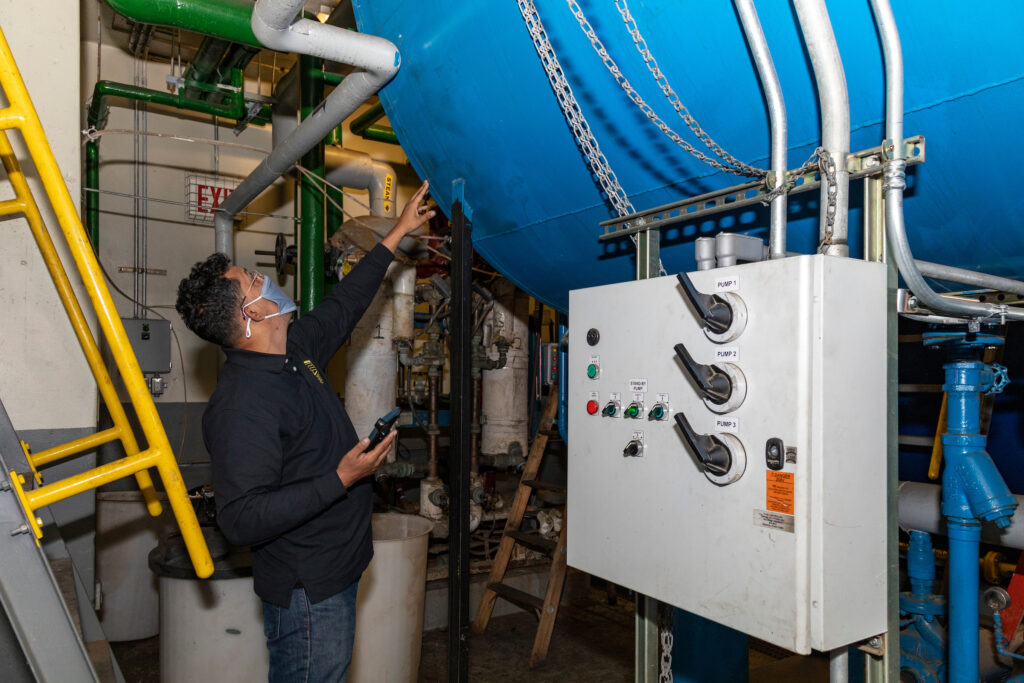
A HOT Specialist inspects the condensate receiver tank (CRT), which is a crucial component for boiler operation (multiple parts of the CRT need to be working in sync to deliver water to the boiler). He visually inspects the electric panel, gauge glasses, pumps, tanks, and valves to make sure everything is working properly.

The HOT Administrator takes a closer look at the CRT site glass and water regulator. During an annual overhaul inspection, parts of the condensate tank must be removed and examined.

Inspecting the main electric panel to ensure it is operating properly.
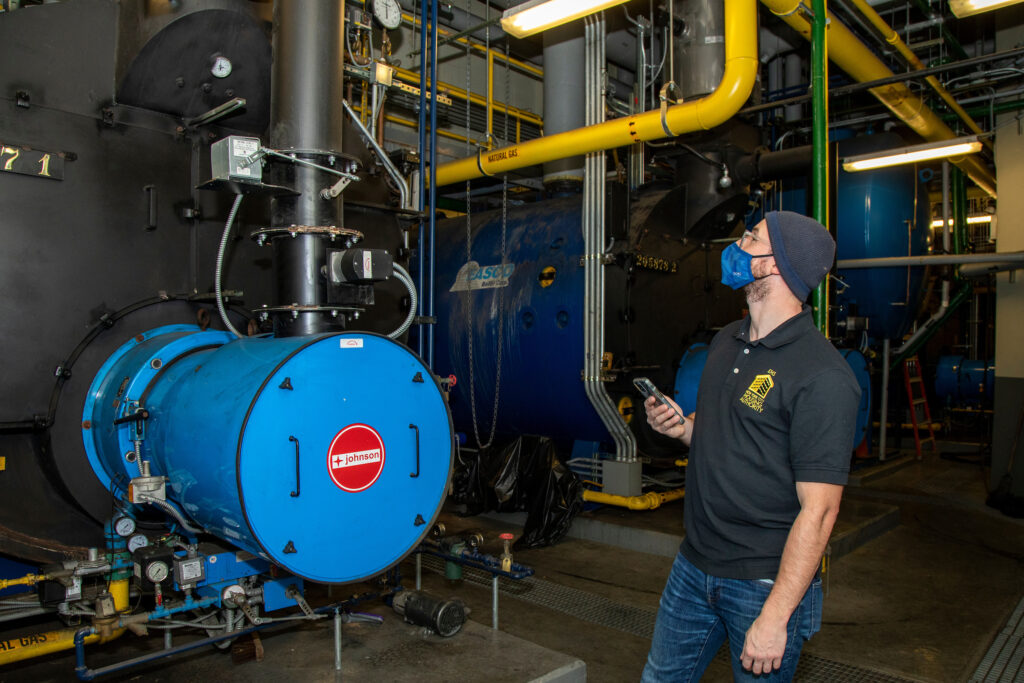
A HOT Specialist visually inspects the piping and overall conditions of the boiler. He is looking for leaking valves and rust and scale buildup that could affect how the equipment works.

The team needs to visually inspect heating equipment from all angles. From the top of the boiler, the HOT Specialist takes another look for any signs of leaks, rust, or rotting.
HOT members consult to discuss their inspection results. The same piece of equipment may be inspected by different specialists to make sure everyone is on the same page. HOT Administrator Krzysztof Wasik believes in the power of teamwork: “Consulting with your colleague is a good practice to see if he agrees with your concerns. The strength of the team is each individual member. The strength of each member is the team.”
During the inspection, the team identifies a manhole plate with signs of corrosion that could cause a steam leak. When team members find issues, they share the necessary corrective actions with the Heating Management Services Department so that repairs are made.
The team tests the equipment to make sure all the components are in working condition.

At the end of an inspection, HOT members review the data collected and cross reference their findings with what was reported by the Heating Management Services Department. If the heating equipment fails inspection and/or components need to be repaired, the team contacts the development’s heating administrator with the list of corrective actions that need to be taken.
If you have any concerns or complaints about heat and hot water or heating equipment safety, you can report them to NYCHA through this website.

